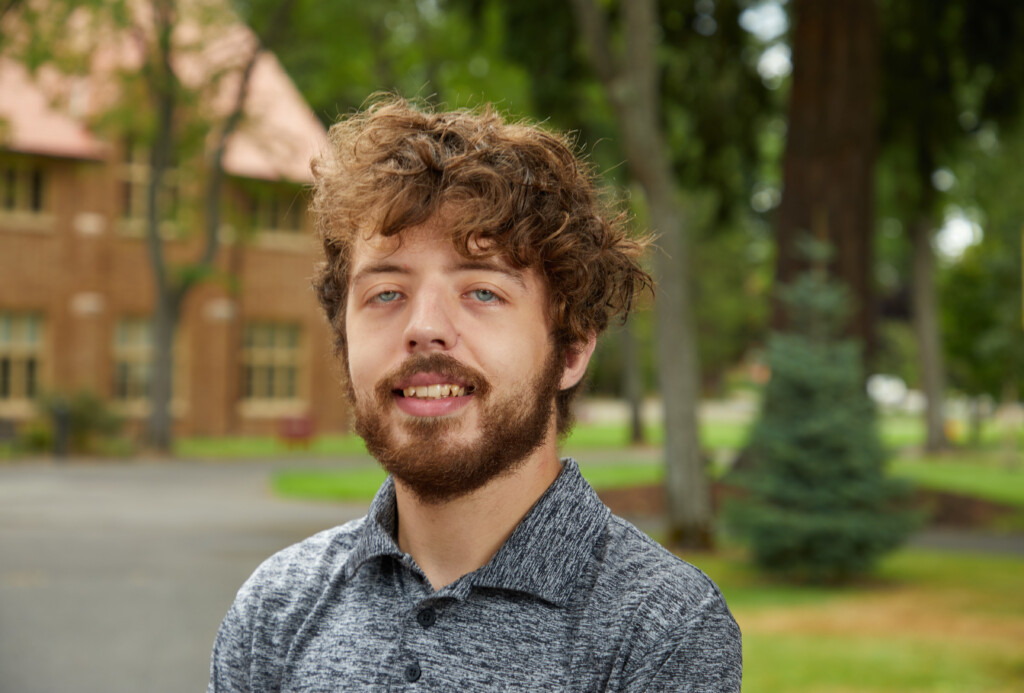Page 179 • (2,051 results in 0.048 seconds)
-
intended to demonstrate competency in grammar and composition as well as comprehension and analysis of written work. In general, the English requirement is met by taking courses that medical schools would recognize as writing or literature courses. Chemistry Courses Take the following two-course sequence in general chemistry: CHEM 115 (General Chemistry I)* CHEM 116 (General Chemistry II) Take the following two-course sequence in organic chemistry: CHEM 331/333 (Organic Chemistry I + laboratory) CHEM
-
PLU Strings Alumni ProfilesThe rich variety of course offerings at PLU make for an remarkably diverse profile of the PLU String alumni. Here is a glimpse of just some of the remarkably different paths some of the participants in PLU Strings have taken…Scott Faulkner Scott graduated with a Bachelor of Musical Arts in Music (with a minor in English Literature) in 1991. He went on to earn a Master of Music in Double Bass Performance from the University of Nevada at Reno in 1996. Says Scott of his
-

high school. By chance I was sitting with Dr. Matt Smith and was able to speak with him about research, the biology department, and my own interests. Anna Kreutz ’12 is from Chehalis, Wash. Another piece that made PLU stand out was the school’s Lutheran foundation, as well as global and environmental focus — all of which aligned with my own values. I’d heard wonderful things about PLU from a number of people back home, but stepping onto campus was what solidified my decision. The people here all
-
Chapter 296-62 WAC, Part J-1WAC 296-62-090131.0 IntroductionSome employees at PLU, primarily those who work outdoors, in food service, and environmental service positions may be exposed to temperatures that cause heat or cold stress. Employees who work outside of the “comfort zone” may experience decreased levels of productivity and quality of work. The frequency of accidents also increases. Increased body temperature and physical discomfort promote irritability, anger, and other emotional
-
. Purposes, advantages, and limitations of standardized and other assessment tools are explored. (2) EDUC 429 : Diversity Responsive Children's Literature Explores diversity responsive children's literature and why these texts are imperative for all readers. Emphasizing identifying, selecting, and evaluating high-quality, diversity responsive books across genres and formats (e.g. novels in verse, graphic novels, print/digital) as well as strategies for advocacy and use in K-6 classrooms. (2) EDUC 438
-
collaborators Brief overview: In many fields, research is conducted in teams or with a collaborator. This activity will help students learn about important voices within a field, as well as identify their own potential “collaborators” from existing scholarship. Instructors, particularly those in introductory courses, will be able to help students understand why certain voices are important in their field, and how to draw on the expertise of others. This activity can be used in lieu of a literature review
-
the literature as the ability to “bounce back” from life’s challenges (Fletcher & Srkar, 2013; Troy et al., 2023); however these conceptualizations are developed with “normative” experiences in mind (i.e., experiences of white, cisgender, and heterosexual individuals). Existing resilience frameworks focus on one domain of identity (QT or BIPOC), do not incorporate collective healing and acts of resistance against oppression, and miss opportunities to understand how intersectional resilience may
-
helping to develop policy as well as reviewing other proposed policy, thinking about how it could affect paleontological resources,” Foss said. “We work on and review a lot of environmental impact statements and assessments, making sure they are adequate for paleontology. “We’re also really big in the planning and management process of public lands. If there is going to be a pipeline, right-of-way or an energy corridor that may affect a lot of paleontological resources, I get involved and explain how
-
Painting and a minor in communication. However, that was far from the original plan. She had intended to study biology and environmental science. “I remember sitting down with (Professor) Michael Stasinos and he said ‘I thought you were a painting major, you take so many art classes!’ And that made me think about the fact that I was, I had been taking so much art to keep myself sane that I was pretty close to an art major,” Reed said. Rob Wells, associate professor of communication and director of the
-

essentially pulled back into Tacoma to do what I was doing before, but on a professional level,” Lindhartsen said. In just the 30-year history of the individualized major, PLU students have designed degrees in digital media, Indigenous studies, global health, and environmental education. To do this, students draw from PLU courses and develop their expertise through extensive and rigorous conversations and planning with a committee of faculty who support and guide them. “You take courses from all around
Do you have any feedback for us? If so, feel free to use our Feedback Form.


